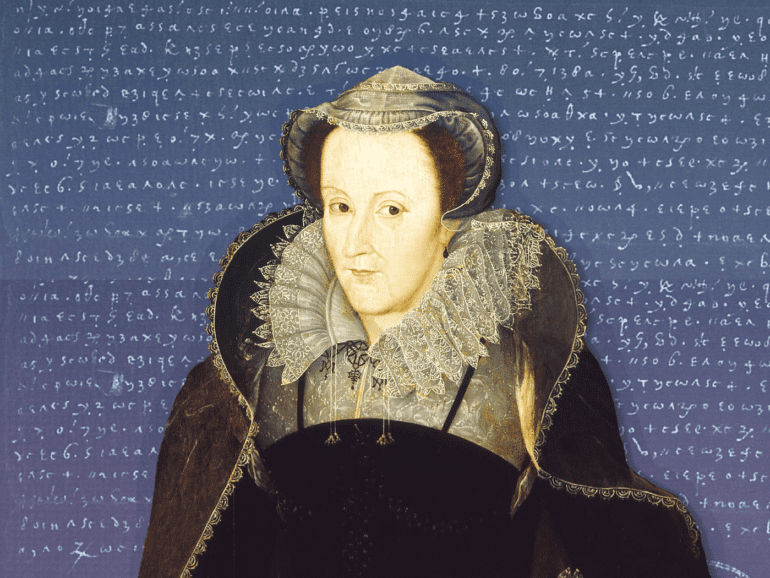TL;DR:
- Codebreakers are using AI to uncover long-kept secrets from historical documents, including the encrypted letters of Mary, Queen of Scots.
- The Decrypt Project, a group of computer-savvy historians, combines image analysis, pattern recognition algorithms, and expertise in ancient languages to translate forgotten texts.
- The breakthrough in decrypting Mary’s letters reveals her use of a complex homophonic cipher, revolutionizing the exploration of historical cryptography.
- The Decrypt Project aims to develop a tool, akin to a “Google Translate for the ages,” that can scan and translate historical documents into modern English, regardless of language or encryption used.
- Historians gain confidence in their code-cracking abilities as AI advancements assist in deciphering diverse historical texts.
- The market implications include potential advancements in AI-powered language translation tools, preservation of historical heritage, and increased understanding of our collective past.
Main AI News:
In a fascinating quest to unveil the enigmatic tales of the past, codebreakers are harnessing the power of artificial intelligence (AI) to decipher historical mysteries. Mary, Queen of Scots, held captive centuries ago, encoded her plight in secret letters, employing a cunning “spiral locking” technique to safeguard their integrity. These epistles conveyed her anguish over her son’s abduction, lamented her conditions of captivity, and advocated for a politically advantageous union between France and England. However, for 436 years, their secrets remained locked away, protected by a complex homophonic cipher.
Recently, a group of computer-savvy historians known as the Decrypt Project unveiled a groundbreaking computer system capable of decrypting Mary’s letters. Their revolutionary solution, detailed in a remarkable paper, exposed Mary’s use of encryption techniques, specifically a complex homophonic cipher. By replacing individual letters of the alphabet with various symbols, Mary concealed her messages from prying eyes. This breakthrough marks a significant milestone in the exploration of historical cryptography, unlocking a world of hidden knowledge.
The Decrypt Project, an assembly of meticulous researchers and historians, has dedicated a decade to scrutinizing manuscripts from European archives. They employ a combination of image analysis, pattern recognition algorithms, and their own expertise in ancient languages to breathe life into forgotten texts. Their inspiration partially stems from the successful decryption of the Copiale cipher in 2011—a mystifying 105-page manuscript crafted by German occultists in the 1700s. These cryptic documents revealed an initiation ritual within a secret society, involving recruits reading a blank page before plucking a single eyebrow hair. By fusing technology with historical acumen, the Decrypt Project and other kindred spirits strive to employ AI advancements to unearth the secrets hidden within an extensive array of age-old texts.
The Decrypt Project harbors a grand vision—a veritable Google Translate for antiquity. This ambitious endeavor seeks to develop a tool capable of scanning historical documents and seamlessly translating them into modern English. Regardless of their age, language, or encryption, this revolutionary tool would bridge the gap between past and present. While the realization of such a tool remains uncertain, historians continue to gain confidence in their code-cracking capabilities. Beata Megyesi, the esteemed leader of the Decrypt Project and a professor of computational linguistics at Uppsala University in Sweden, acknowledges the challenges posed by the diverse nature of historical texts, including varied writing systems and handwriting. Nonetheless, the project has made remarkable strides by leveraging AI models to transcribe and streamline these intricate systems, fostering greater efficiency in the process.
Coded mysteries have long shrouded history, and while decryption alone may not unveil all their secrets, it remains a potent tool. A study is presently underway to explore how the encryption sophistication employed by the Roman Catholic Church while communicating with world leaders diminished between the 16th and 18th centuries. Although the regression has been documented, the reasons behind it remain elusive. One theory posits the existence of a specialized group within the Vatican responsible for crafting coded messages, which failed to pass on their techniques to subsequent generations.
In 2020, mathematicians claimed victory in cracking the cipher employed by the notorious Zodiac serial killer during his communication with the police in 1969. Similar to other coded messages, the Zodiac’s notes employed a complex substitution methodology, where various characters were substituted for the alphabet. By ingeniously rotating symbols in a regular pattern, the Zodiac killer elevated the difficulty of decrypting the code. Through the use of custom-built software, mathematicians successfully deciphered one of the Zodiac’s messages, which the FBI later confirmed as genuine, stating, “I hope you are having fun in trying to catch me.” Although many Zodiac letters remain encrypted, the continuous evolution of code-breaking techniques provides historians with invaluable insights and a newfound advantage in their pursuit of unraveling long-held secrets. As Kevin Knight, a professor of computer science at the University of Southern California and a key contributor to the Copiale cipher decryption, aptly points out, “The historical significance is big. It’s been an arms race since ancient times between the codemakers and the breakers.“
The synergy between human ingenuity and AI capabilities holds tremendous promise for the field of historical decryption. As codebreakers continue to unlock the secrets of the past, AI is poised to play an increasingly pivotal role, unveiling hidden narratives and preserving the intricate tapestry of our collective history. Through the Decrypt Project and similar endeavors, the treasures concealed within the annals of time inch closer to the light of day, empowering us to better understand and appreciate the rich heritage that binds us together.
Conclusion:
The collaboration between codebreakers and AI technology has opened doors to previously hidden historical narratives. The Decrypt Project’s breakthroughs in deciphering ancient codes, including Mary, Queen of Scots’ encrypted letters, demonstrate the potential for AI to unravel long-kept secrets. This development has significant market implications, such as the advancement of AI-powered translation tools, the preservation of historical heritage, and the deepening understanding of our shared past. Industries related to language translation, historical research, and cultural preservation can leverage these advancements to provide innovative solutions and services that bridge the gap between the past and present.

